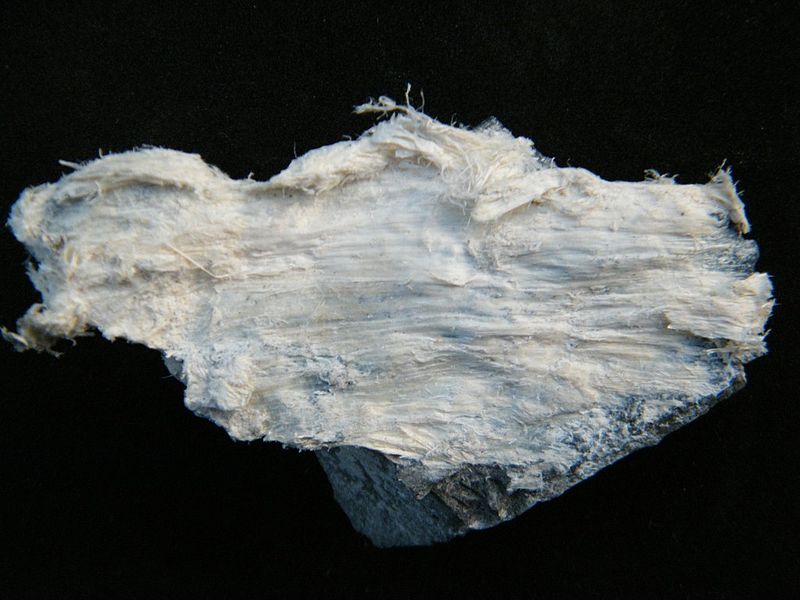Palygorskite Value, Price, and Jewelry Information
Although marketed as “angel skin opal,” “rock wood,” and “mountain leather,” palygorskite is neither opal, wood, nor leather. This unusual, parchment-like mineral can be cut into cabochons or carved.
1 Minute Read
Although marketed as “angel skin opal,” “rock wood,” and “mountain leather,” palygorskite is neither opal, wood, nor leather. This unusual, parchment-like mineral can be cut into cabochons or carved.
Start an IGS Membership today
for full access to our price guide (updated monthly).Palygorskite Value
Comments
Palygorskite is closely related to sepiolite, also known as meerschaum. Structurally, it contains amphibole-like silicate chains. According to a 2010 study, intermediate compositions exist between aluminum/magnesium-rich palygorskites and magnesium-rich sepiolites.
Palygorskites typically contain parchment-like, matted aggregates of fibrous crystals. This material can look and feel like flexible leather. Due to this quality, it's received fanciful designations such as "rock wood," "mountain wood," and "mountain leather." (Some compare it to wet newspaper).
The "angel skin" of this odd gem material can show very attractive pale gray, pink, and yellow colors. However, the appellation "angel skin opal" is a misnomer. Palygorskites and opals are altogether distinct gem species. Nevertheless, crystal inclusions of this mineral have been found in pink opals.
"Angel stone" is a microcrystalline material made principally of pale, pink palygorskite impregnated with silica. This makes the material harder (4.5) and more durable than pure palygorskite for jewelry use.
Attapulgite refers to palygorskite sourced from Attapulgus, Georgia. This synonym appears more frequently in medical literature.
In addition to its appeal as an unsual gemstone, this mineral has many commercial uses due to its liquid absorbency. Its practical applications range from pet litter and drilling mud to anti-diarrheal medications. Historically in the US, ranchers used this mineral for fulling, absorbing fat from wool. Hence, it received the name, "fuller's earth." The ancient Mayans used this mineral to create the color known as Maya Blue.
Synthetics
No known synthetics or treatments. However, labs have synthesized sepiolite.
Sources
- United States: Attapulgas, Georgia; Virginia; Metalline Falls, Washington.
- England; France: Morocco; Russia; Scotland.
- Mexico; Peru (angel stone).
Care
Even after its silica impregnation, angel stone remains relatively soft compared to more common jewelry stones. Store any palygorskites separately from other gems to avoid contact scratches and keep away from moisture.
See our Gemstone Jewelry Cleaning Guide for care recommendations.
Joel E. Arem, Ph.D., FGA
Dr. Joel E. Arem has more than 60 years of experience in the world of gems and minerals. After obtaining his Ph.D. in Mineralogy from Harvard University, he has published numerous books that are still among the most widely used references and guidebooks on crystals, gems and minerals in the world.
Co-founder and President of numerous organizations, Dr. Arem has enjoyed a lifelong career in mineralogy and gemology. He has been a Smithsonian scientist and Curator, a consultant to many well-known companies and institutions, and a prolific author and speaker. Although his main activities have been as a gem cutter and dealer, his focus has always been education. joelarem.com
Related Articles
Unique Gem Materials for Jewelry Design
Black Diamond Value, Price, and Jewelry Information
Chameleon Diamond Value, Price, and Jewelry Information
Gray Diamond Value, Price, and Jewelry Information
Latest Articles
800 Years of Mogok: A Celebration in Tenuous Times
What is the Average Gemstone Faceting Yield?
Pyroxmangite Value, Price, and Jewelry Information
How to Identify Emerald Simulants and Synthetics
Never Stop Learning
When you join the IGS community, you get trusted diamond & gemstone information when you need it.
Get Gemology Insights
Get started with the International Gem Society’s free guide to gemstone identification. Join our weekly newsletter & get a free copy of the Gem ID Checklist!
